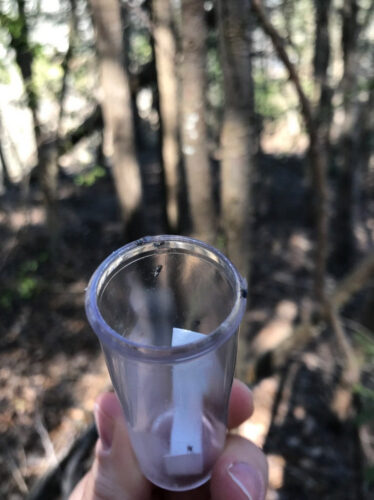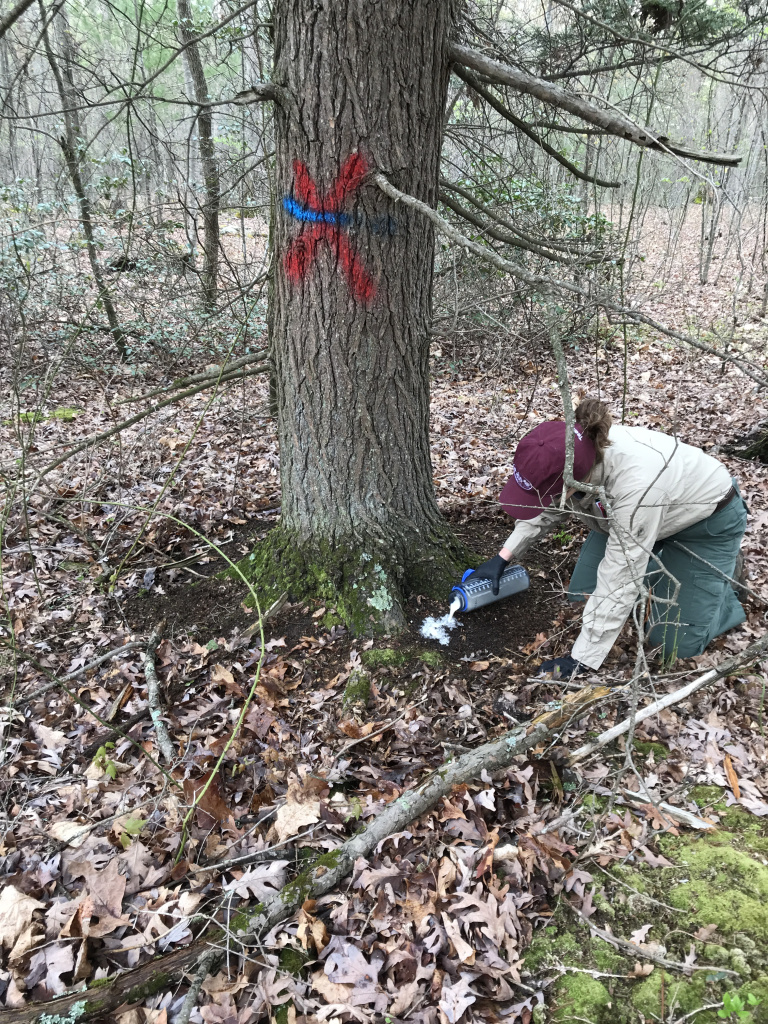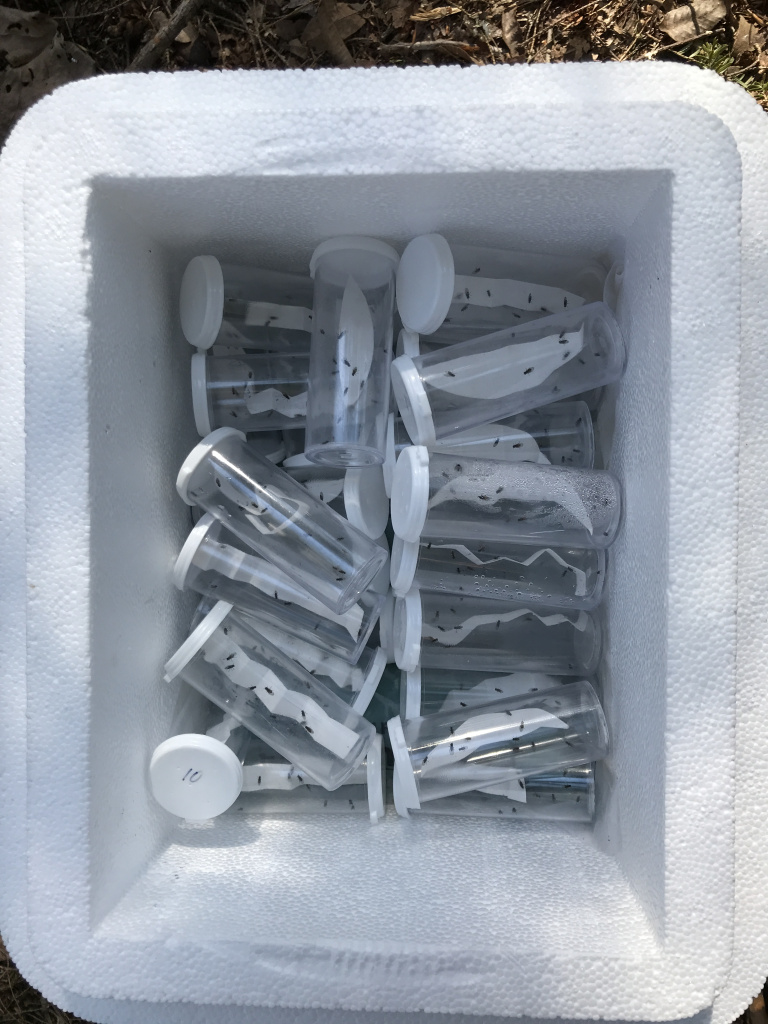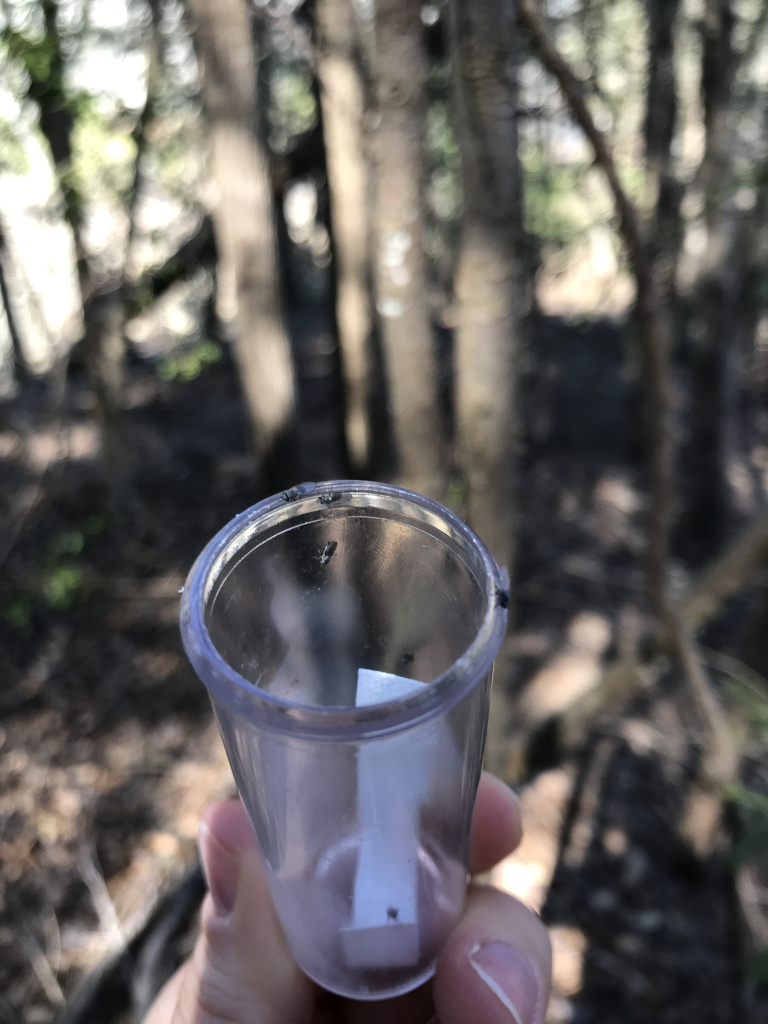Fighting the Hemlock Woolly Adelgid on State Forests
April 23, 2021 9:31 am

By Lori Chamberlin, VDOF Forest Health Manager
Hemlock trees have been under attack since the introduction of the hemlock woolly adelgid, an invasive insect that was first discovered in eastern North America in the 1950s. These small insects settle at the base of hemlock needles, feed on plant sap, and surround themselves in soft, white ovisacs that resemble cotton balls. They may look harmless, but the hemlock woolly adelgid has caused widespread hemlock mortality in eastern North America. To fight back, the VDOF forest health program has implemented a variety of control techniques to protect remaining hemlocks on State Forests in Virginia.

When applied correctly, chemical control is very effective and can protect a hemlock tree for many years. In April, VDOF forest health staff and Shenandoah work area staff treated over ninety hemlock trees at First Mountain State Forest and over thirty trees at Paul State Forest. The hemlocks at both forests are infested with the hemlock woolly adelgid, but are in relatively good condition. A systemic insecticide was applied as a soil drench around the base of each tree; it will be taken up by the roots and distributed throughout the tree to provide protection for up to seven years!

Biological control is another method with the potential to provide long-term protection. All biological control agents are studied at quarantine facilities before they are approved for release, to ensure that they will not affect non-target hosts. Predator beetles (Laricobius spp.) have been released on public lands for many years, but this year VDOF participated in the release of a new biocontrol agent- silver flies. The larvae of Leucopis argenticollis silver flies prey on the eggs of hemlock woolly adelgid. In March, 435 adult Leucopis argenticollis flies from the NYS Hemlock Initiative’s HWA Bio-Control research lab at Cornell University were released at Sandy Point State Forest. We hope that these flies will establish a population and help control the hemlock woolly adelgid at Sandy Point for many years.
Category: Featured, Forest Health


